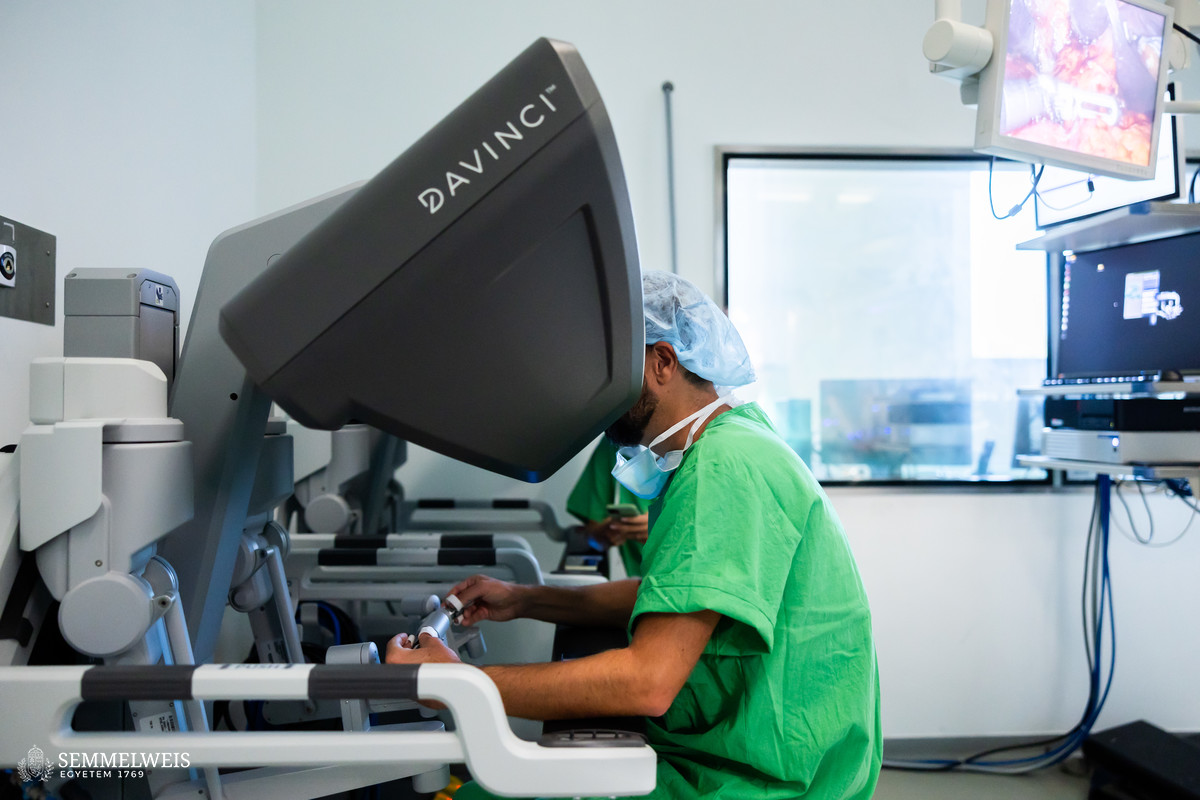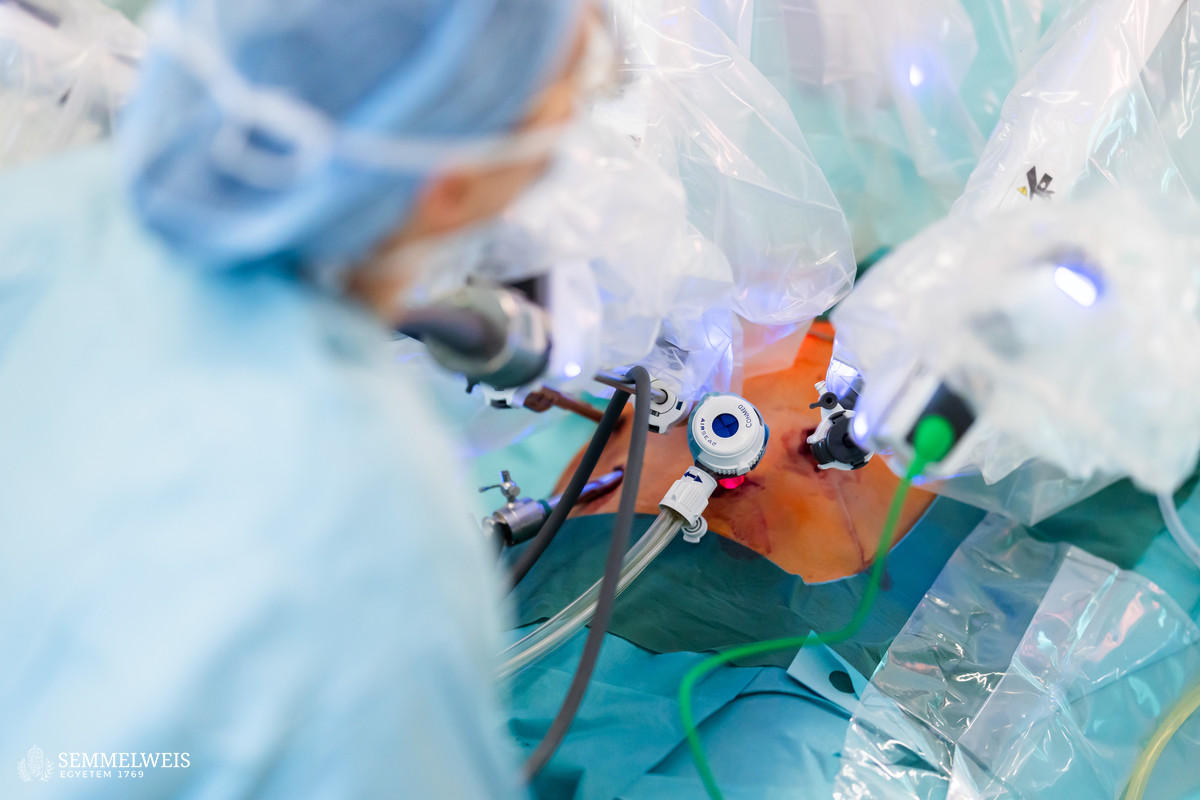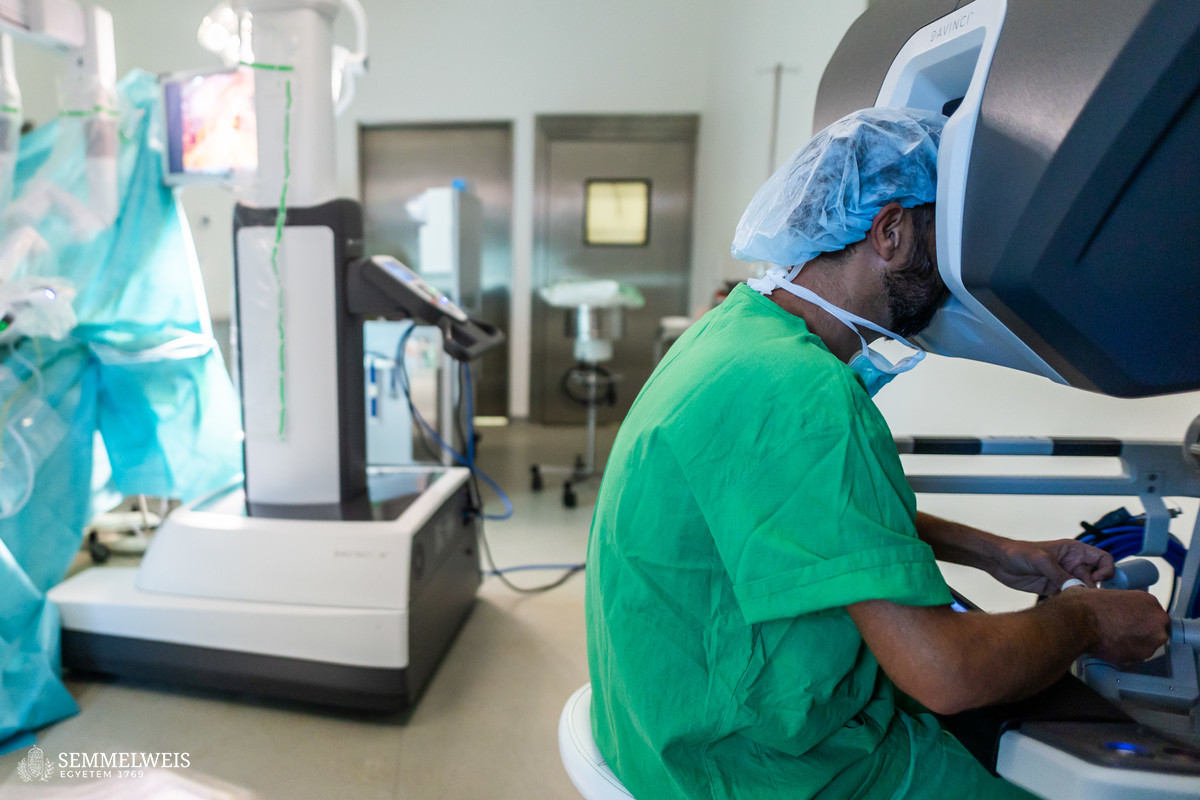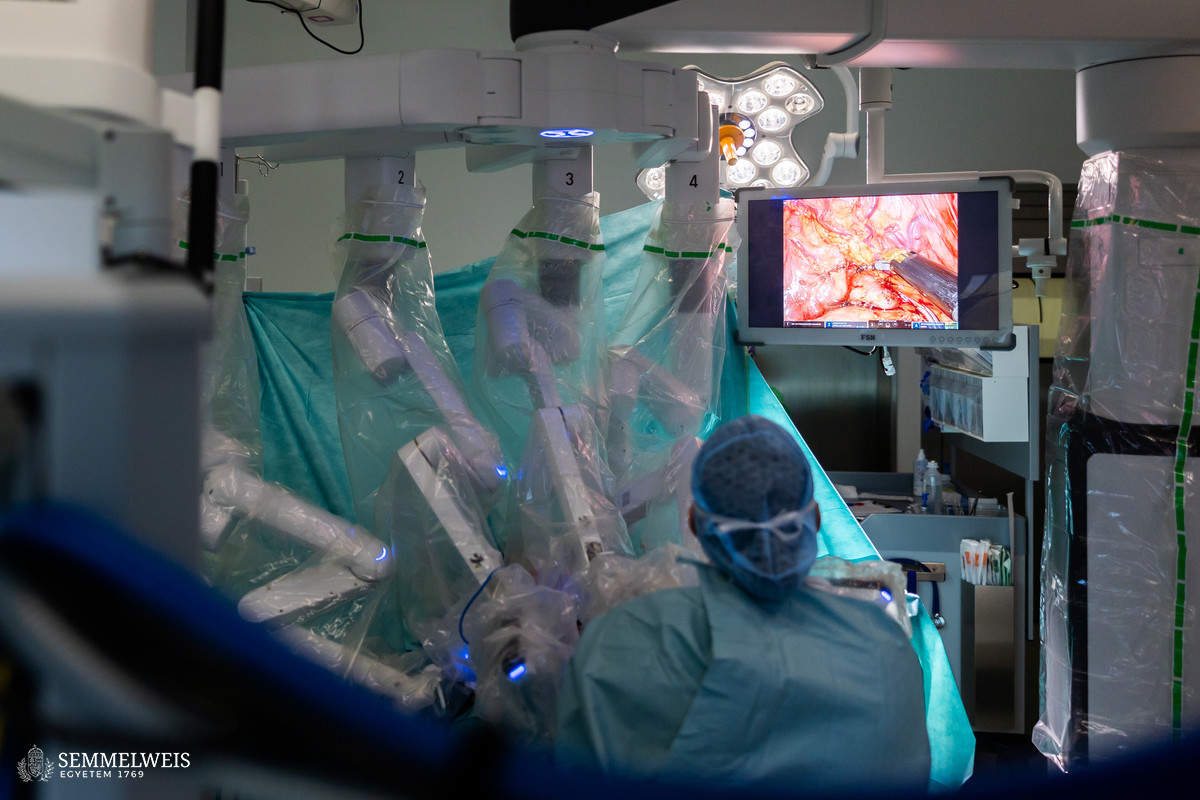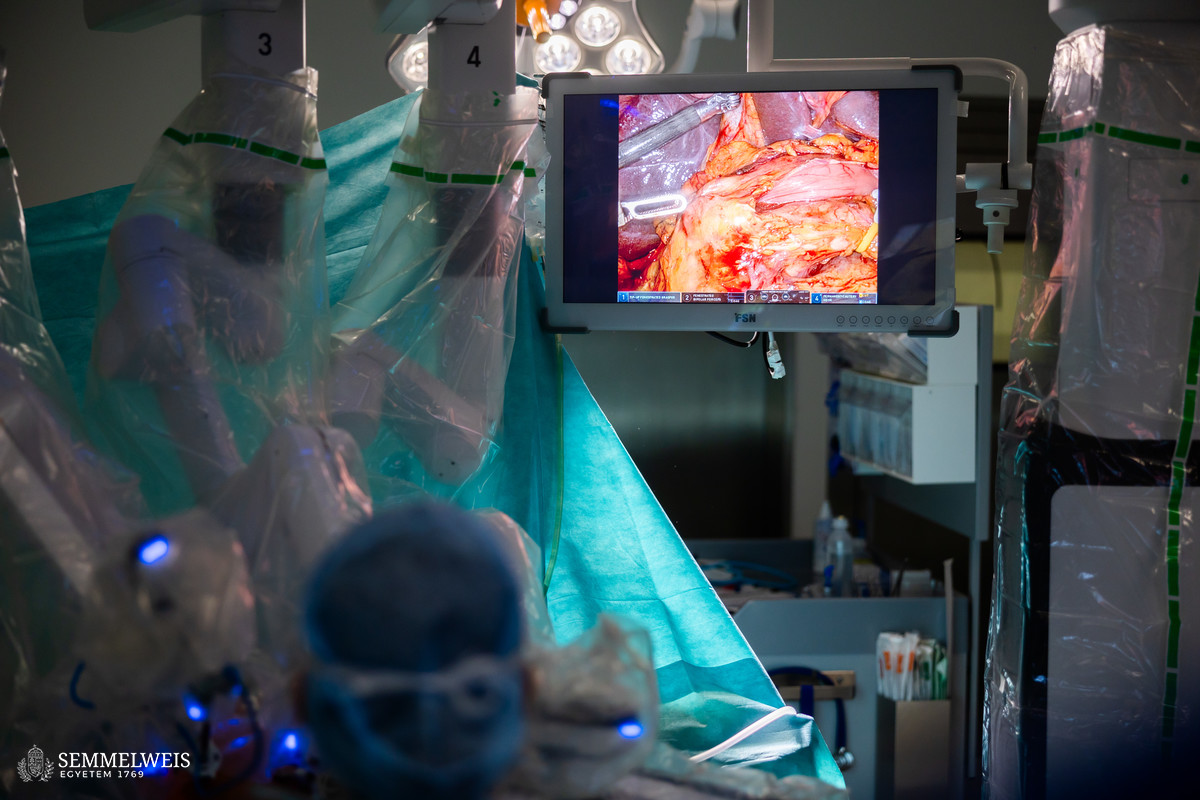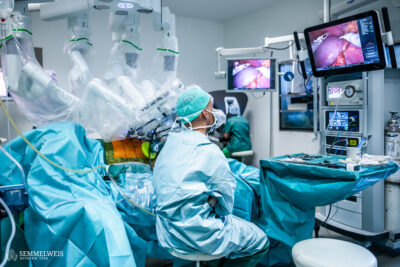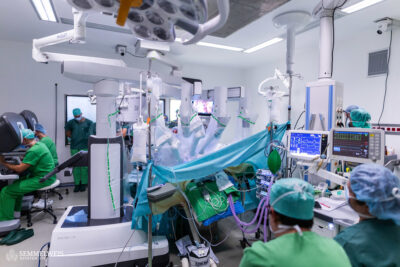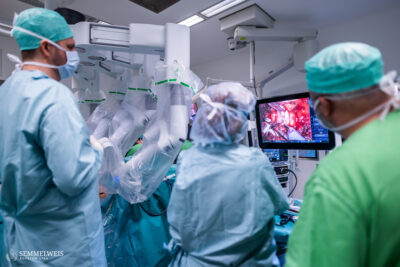“It’s like switching from a hansom cab to a top-notch racing car; it’s different from any procedure we’ve done before,” said Director Dr. Attila Szijártó – who performs liver surgery using this method – when describing what it means for a surgeon to operate with the da Vinci. Perhaps the strangest thing is that you don’t have to scrub in before the operation as you are sitting in the console, a few meters away from the patient, added Dr. Ákos Szücs, who is in charge of pancreatic surgery in STéG’s team of console surgeons. Dr. Oszkár Hahn, who is STéG’s liver surgery profile leader and performs a large number of robotic liver surgeries, highlighted his excitement about the novelty of this state-of-the-art procedure, saying that for him, operating with a robot is like celebrating a holiday.
Trained specialists at the Department of Surgery, Transplantation and Gastroenterology (STéG) use the robot-assisted surgical system for colon, liver, pancreas, and biliary tract surgery and have already completed 350 procedures. As Dr. Attila Szijártó put it:
In each area, we have found the conditions and types of surgery where we can best exploit the benefits of the robot.
In general, the da Vinci is more ergonomic for the surgeon, allows more precise movements, can reduce blood loss during the operation, and can speed up recovery. In some cases, it can also be an alternative to open surgery for abdominal organs, which involves a larger incision and means more stress for the patient, because the da Vinci can reach areas that cannot be reached by laparoscopy, which is also non-invasive, he said.
The primary advantage of both robot-assisted surgery and laparoscopy is that they are minimally invasive, meaning that the surgical site is accessed through small incisions of 1-2 centimeters rather than through a long, 30-40-centimeter incision under the rib cage. With the evolution of surgery, open operations with abdominal incisions have been replaced in more and more areas by minimally invasive laparoscopy, and the next technological step is the use of robots.
Dr. Attila Szijártó said that in patients with malignant colon cancer where the tumor is located near the sphincter, da Vinci surgery improves the chances of preserving the sphincter, which has a clear impact on the patient’s quality of life later on. “With the robot, we can go significantly deeper into the lesser pelvis compared to a laparoscopic procedure. Previously, the alternative was a very complex open surgery performed from several directions that was also more stressful for the patient,” Dr. Attila Szijártó pointed out. The two members of the colorectal console surgery team are Associate Professor Dr. Balázs Bánky and Assistant Professor Dr. András Fülöp.
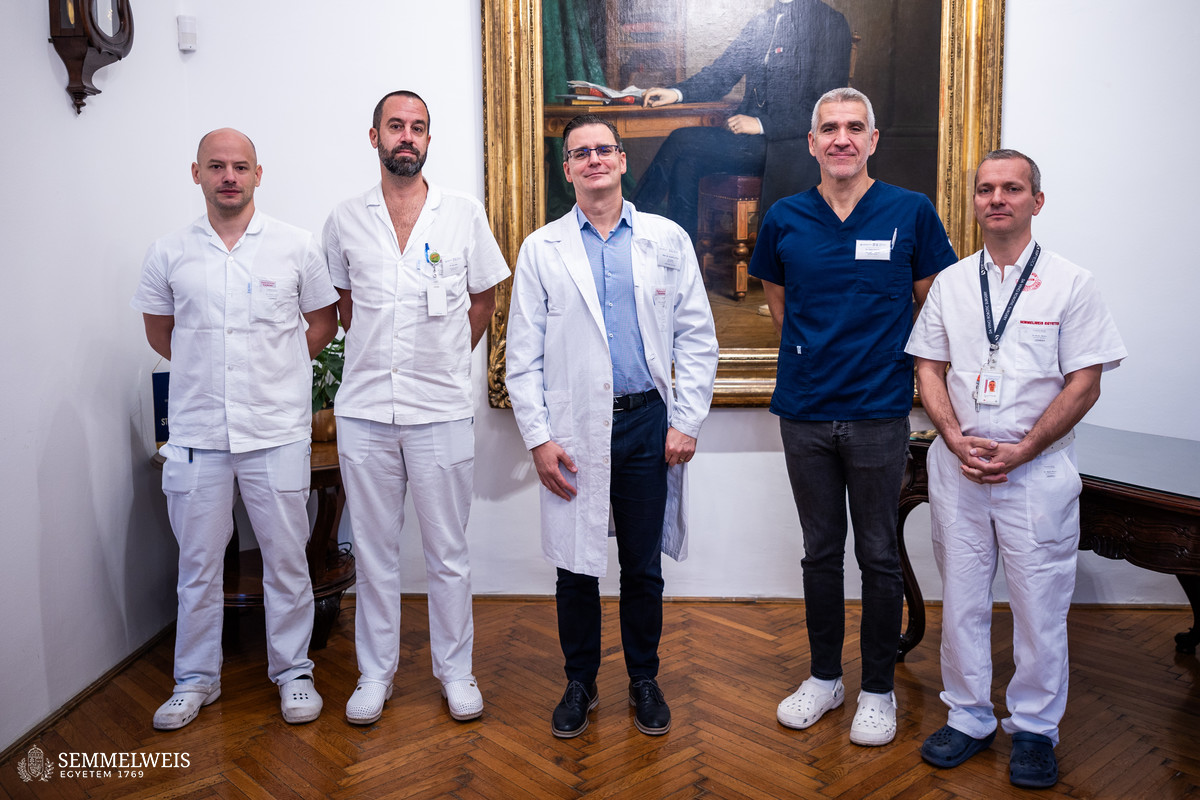
The situation is similar for complex and complicated pancreatic head surgeries, where laparoscopy as a minimally invasive solution has not been widely used in Hungary. “The advantage of the robot in these cases is that it can be used very precisely and gently, in a small area, and in the reconstructive part, the connections can be made with a precision similar to that in open surgery or at an even higher level,” emphasized Associate Professor Dr. Ákos Szücs, Deputy Director and pancreatic surgery profile leader of STéG. The current trend in the world is that large centers are performing an ever smaller number of laparoscopic surgeries to remove the pancreatic head because they are either using the traditional open technique or, increasingly, the robotic technique, he added.
In certain cases, open surgery is technically necessary to make it easier to deal with situations arising from the complexity of the operation: So the robot will most likely never completely take over the role of open surgery, but the scope of indications keeps widening, he noted.
In liver surgery, the robot is a great help for us if we want to operate on the patient in a minimally invasive way, i.e. using a procedure that involves a smaller incision and therefore a faster recovery, because the liver is a relatively large organ and there are parts of it that cannot be reached at all with a laparoscope, said Associate Professor and Deputy Director Dr. Oszkár Hahn.
He added that today more than 80 percent of such complex and difficult liver surgeries at STéG were performed robotically, rather than through an open operation.
“Another huge advantage of the robot is that I can access such tiny places and manipulate – suture, dissect – in a way that is not always possible with the same level of precision even in open surgeries. Surgery of the bile duct, the bile ducts leading out of the liver, is one area in particular where this is very much needed,” he pointed out.
At STéG, future plans include the robot-assisted removal of a kidney for living donor kidney transplants, which will allow even more precise surgery and even less stress for the donor.
The da Vinci Surgical System at Semmelweis University
The da Vinci Surgical System was inaugurated in June 2022 at Semmelweis University. The fourth-generation da Vinci Xi robot, representing the most advanced technology, was installed at the university’s Department of Surgery, Transplantation and Gastroenterology (STéG). The robotic technology is currently used mainly in abdominal surgery, as well as in gynecological and urological procedures. It is also used in education thanks to its dual-console design. During the robot-assisted procedure, the console surgeon is seated in the control unit a few meters from the operating table; however, it is essential that there is no element of the procedure that the surgeon does not control. The four-armed robot above the operating table is controlled by a total of seven pedals and two masters (joysticks).
Pálma Dobozi, Róbert Tasnádi
Translation: Dr. Balázs Csizmadia
Photos by Bálint Barta – Semmelweis University

